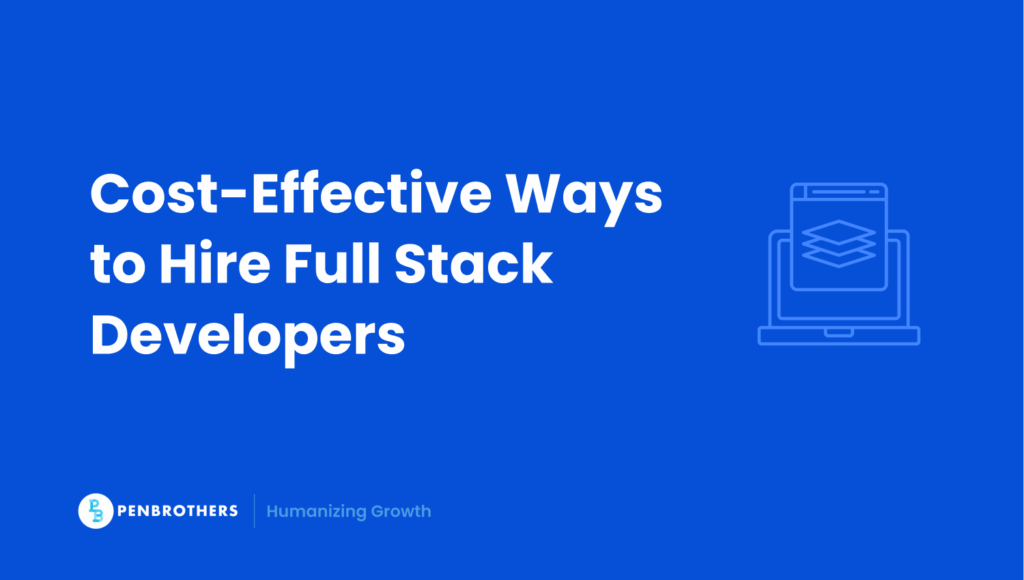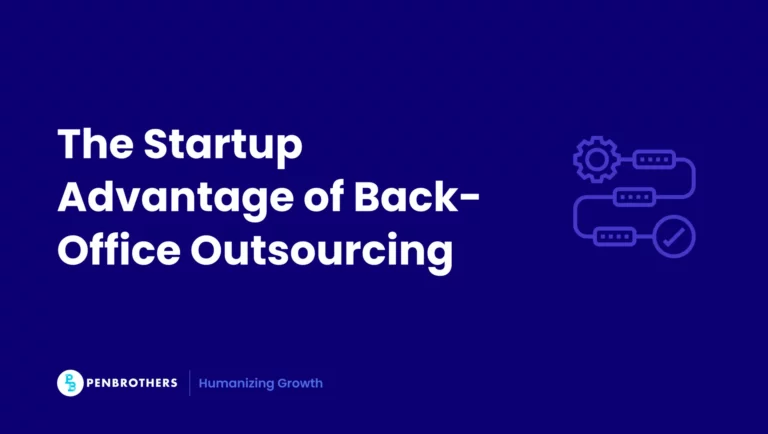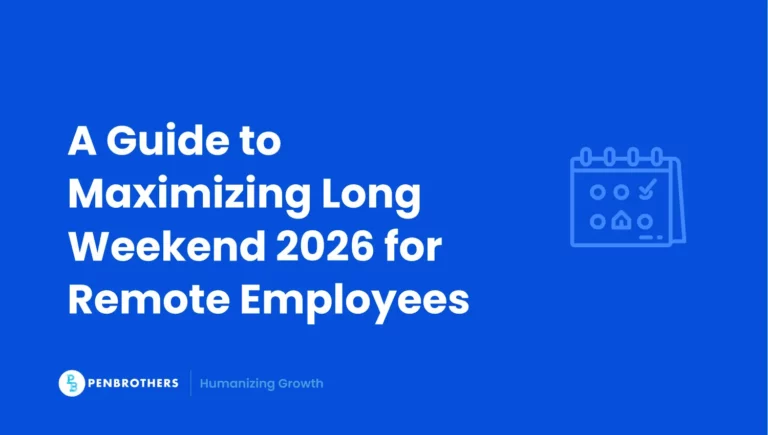Imagine a startup that hires multiple specialized developers, front-end, back-end, and DevOps, only to find itself over budget and project timelines slipping. That’s a common scenario when demand eclipses supply, and you don’t strategically manage hiring.
Full-stack developers are versatile and can cover multiple layers: front‑end, back‑end, and even deployment. That adaptability is invaluable, but that breadth also means they command higher rates if you don’t source smartly.
What a Full Stack Developer Really Does (and Why That Matters for Your Budget)
A full-stack developer is not just “someone who codes both front-end and back-end.” They’re a multi-layer problem-solver who can take a product from concept to deployment with minimal hand-offs, saving time and reducing the number of people you need on payroll.
Core Responsibilities:
- Front-end development: Building the user interface using HTML, CSS, and JavaScript (plus frameworks like React or Vue) while ensuring the design is responsive, accessible, and aligned with UX best practices.
- Back-end development: Designing and managing databases, writing server-side logic, and creating secure, scalable APIs that connect the front end with the back end.
- DevOps integration (often): Setting up deployment pipelines, configuring cloud environments (AWS, Azure, GCP), and implementing continuous integration/continuous delivery (CI/CD) for faster, more reliable releases.
Why This Matters for Your Budget:
- Fewer hires needed: One full-stack developer can replace two or three specialized roles in smaller projects, reducing payroll and coordination overhead.
- Faster delivery: With a single person handling multiple layers, there’s less waiting for hand-offs, fewer bottlenecks, and a clearer understanding of how each layer affects the others.
- Agility for startups: In early-stage environments, where priorities can shift weekly, having a versatile developer means you can adapt without bringing in new contractors or reassigning teams.
The catch? This breadth of skill makes full-stack developers highly sought-after, and that demand can inflate salaries, unless you source smartly through vetted software offshore staffing solutions that balance quality with cost.
Cost Drivers in Hiring Full Stack Developers
Full-stack developer salaries vary by location, experience, and hiring model. Onshore markets like the US command six figures, while offshore locations such as the Philippines or South Asia cost far less without sacrificing quality, especially via vetted partners. Market choice shapes payroll, but hidden costs like onboarding, turnover, and delays also affect budgets.
| Region/Market | Annual Salary Range (USD) |
| United States (onshore) | $100,000–$180,000 |
| LatAm (offshore/near‑shore) | $30,000–$84,000 |
| Eastern Europe | $24,000–$48,000 |
| South Asia (India, Bangladesh) | ~$11,700 |
| Philippines | $6,200–$15,500 |
Working with Filipino remote teams can provide strong technical capability at a fraction of the onshore cost while maintaining delivery quality.
Additionally, hiring costs go beyond base salaries. In-house roles often include benefits, recruitment fees, office overhead, and potential equity dilution, significantly raising the total annual cost. Offshore staffing can reduce labor expenses by a large margin, sometimes by more than half, while also minimizing infrastructure and administrative costs. However, savings should be weighed against factors like onboarding time, turnover risk, and the need for clear communication processes.
Budget-Smart Hiring Models
| Model | Pros | Cons |
| In‑house (US/EU) | Full control, easy cultural fit | Very high salary + overhead |
| Freelance contractors | Flexible, scalable, pay per hour | Risky: mismatches, variable quality |
| Offshore / Nearshore (via partners) | Lower cost, vetted talent, predictable billing, replaced easily | Time zone + communication challenges if unmanaged |
Why Offshore Works
Offshore staffing offers more than just lower salaries, it delivers predictability and flexibility that can be hard to achieve in onshore hiring.
- Predictable flat monthly rates: Instead of dealing with fluctuating hourly costs, overtime pay, or unexpected recruitment fees, offshore partners typically provide all-inclusive monthly pricing. This makes budgeting simpler and more accurate.
- Access to pre-screened talent: Offshore staffing firms maintain vetted talent pools, so you skip the lengthy sourcing process. This is especially effective when using remote IT jobs outsource channels to tap into global talent.
- Strategic value: Beyond cost savings, offshore teams can be scaled up or down quickly to match project demands, allowing you to respond to market changes or deadlines without long-term commitments.
- Reduced overhead: Without the need for additional office space, local benefits packages, or administrative burden, your total cost of employment drops substantially.
When projects are time-sensitive or technically complex, partnering with a reputable offshore provider can deliver high-quality work without the budget strain of traditional hiring models.
Finding the Right Fit Without Overpaying
We don’t just post a job and hope for the best. At Penbrothers, every Full Stack Developer candidate goes through a structured vetting process that ensures both technical proficiency and cultural fit, so you get the right talent without overspending.
Where We Source Talent:
- Developer communities like GitHub and Stack Overflow
- Global job boards (LinkedIn, remote developer platforms)
- Our vetted talent network was built through years of offshore staffing expertise
Explore software offshore staffing, remote IT jobs outsource, and Filipino remote teams for more insights.
What We Assess:
- Technical skills: HTML, CSS, JavaScript frameworks, RESTful APIs, cloud infrastructure, and databases (MySQL, PostgreSQL, MongoDB)
- Soft skills: Problem-solving, adaptability, and clear communication for distributed team success
Our Screening Process Includes:
- Reviewing open-source contributions and past project work
- Administering validated skills assessments (e.g., front-end, back-end, database, and problem-solving tests)
- Leveraging filtered Applicant Tracking Systems (ATS) to ensure only qualified candidates move forward
See software paid vs free for efficient vetting tools.
By combining targeted sourcing with a rigorous evaluation process, we make sure you hire developers who can deliver quickly, collaborate effectively, and stay within budget.
Structuring an Offer That Attracts Talent Without Breaking the Bank
Attracting top full-stack talent doesn’t always mean outbidding competitors on salary. The most sought-after developers often look beyond compensation to assess how a role will support their growth, lifestyle, and long-term career goals. By crafting a balanced offer, you can compete for talent without stretching your budget.
1. Build a Smart Compensation Mix
- Competitive base salary: Benchmark pay against market averages to remain attractive without overpaying.
- High-value perks:
- Remote flexibility – Freedom to work from anywhere, reducing commute stress and appealing to global talent.
- Learning stipends – Annual budgets for courses, certifications, or books that directly benefit both the developer and the business.
- Conference access – Opportunities to attend or speak at industry events, enhancing both skills and professional networks.
2. Offer Non-Cash Incentives That Add Long-Term Value
- Equity or revenue-sharing: Particularly appealing to long-term hires who want to share in the company’s growth.
- Performance-based bonuses: Align rewards with measurable project outcomes, ensuring payouts are tied to real business impact.
3. Sell More Than a Paycheck
Highlight the aspects of your company that money can’t buy:
- A strong engineering culture where their ideas influence product direction
- Clear career development pathways
- A mission or product they can feel proud to build
Often, developers will choose a role that offers autonomy, skill growth, and a meaningful purpose over one that simply pays more. The key is to position your offer as a complete value package, not just a salary figure.
Interviewing for Both Skill and ROI
Hiring a full-stack developer isn’t just about finding someone who can code, it’s about identifying a professional who can deliver business value efficiently, collaborate well in a team, and minimize costly rework. Your interview process should evaluate both technical ability and return on investment (ROI) potential.
1. Test Technical Depth and Practical Application
Ask scenario-based questions that reveal problem-solving skills and architecture thinking:
- “Explain how you’d structure authentication for a REST API serving both web and mobile clients.”
Assesses security awareness, scalability, and ability to tailor solutions to multiple platforms. - “Walk me through designing a database schema for handling user-generated content with complex relationships.”
Evaluates database modeling, optimization strategies, and foresight in handling growth. - “How would you integrate a new third-party API into an existing production system?”
Reveals adaptability, risk assessment, and integration best practices.
2. Uncover Behavioral Traits That Drive ROI
Use open-ended prompts to understand how they handle challenges and collaborate:
- “Tell me about a time a sprint deliverable failed. What did you learn and how did you fix it?”
Shows accountability, resilience, and problem-solving under pressure. - “How do you ensure your code avoids unnecessary rework?”
Highlights quality control habits, testing discipline, and attention to detail. - “Describe how you’ve worked with non-technical stakeholders to align on project requirements.”
Assesses communication skills and ability to translate technical concepts into business language.
3. Evaluate for the Full Value Chain
When reviewing answers, look beyond raw technical output. Focus on:
- Speed: Can they deliver within tight deadlines without cutting corners?
- Quality: Is their code maintainable, scalable, and well-documented?
- Ownership: Do they proactively identify and solve problems before they escalate?
The goal is to hire someone who not only meets your technical requirements but also protects your budget by delivering reliable, business-aligned results from day one.
Avoiding Common Hiring Pitfalls That Waste Money
Even with the best intentions, hiring missteps can drain budgets, delay delivery, and damage team morale. Being aware of the most common traps and actively avoiding them can save both time and money.
1. Over-Hiring Seniority
- The problem: Bringing in a senior-level developer when the project primarily requires mid-level skills inflates payroll without proportionate gains in output.
- The fix: Conduct a skills-to-scope analysis before hiring. Use senior developers for architecture, critical problem-solving, or mentorship, and assign routine tasks to mid-level or junior developers. This blend keeps costs in check while maintaining quality.
2. Undefined Scope
- The problem: Starting a project without clear objectives, deliverables, and timelines invites scope creep, extra features, or changes that balloon costs.
- The fix: Document detailed requirements before making an offer. Share these with candidates during the interview stage so they understand exactly what they’re committing to, and use this clarity to accurately estimate timelines and costs.
3. Cultural Mismatch
- The problem: In distributed or offshore teams, misaligned communication styles, work habits, or values can undermine productivity and increase turnover.
- The fix: Include cultural fit questions in interviews, such as how they prefer to communicate across time zones or how they’ve navigated remote collaboration challenges in the past. Consider a trial project to validate alignment before committing long-term.
Avoiding these pitfalls not only saves money but also ensures you hire developers who will integrate smoothly, deliver on expectations, and contribute to long-term team stability.
Scaling Your Development Team Sustainably
Growth brings opportunity, but without the right structure, it can also create bottlenecks, burnout, and budget overruns. Sustainable scaling means building a team that can expand capacity without sacrificing quality or financial control.
1. Balance Your Talent Mix
- Junior Developers – Handle routine coding, bug fixes, and maintenance tasks. This frees up senior talent for higher-value work while keeping costs low.
- Mid-Level Developers – Deliver complete modules, features, or integrations with minimal supervision. They’re your workhorses for steady progress.
- Senior Developers – Focus on system architecture, critical problem-solving, and mentoring junior staff to raise overall team capability.
By blending these levels, you get the expertise you need while avoiding the inflated payroll that comes from overloading on senior hires.
2. Leverage Offshore Staffing Partners
Partners like Penbrothers enable you to:
- Scale rapidly when project demands spike, without the long hiring cycles of traditional recruitment.
- Reduce risk through built-in replacement policies if a hire isn’t the right fit.
- Maintain predictable costs via transparent, all-inclusive monthly rates.
3. Invest in Retention Early
Scaling isn’t just about adding people, it’s about keeping the right ones. Practical retention strategies include:
- Learning budgets for training, certifications, and upskilling.
- Regular check-ins to address issues before they impact morale.
- Peer recognition programs that reinforce a positive, collaborative culture.
- Clear career paths so team members see long-term potential within your organization.
When supported by a well-structured hiring strategy, offshore collaborations like outsourced jobs in the Philippines and Filipino remote teams can form the backbone of a scalable, cost-efficient, and resilient development team.
Final Thoughts
To hire full-stack developers without blowing your budget, focus on impact, not only on skills or rates. Use strategic sourcing, modeled hiring, rigorous vetting, and smart compensation structures to maximize ROI.
If you’re looking for cost-efficient, vetted offshore developer solutions tailored to your needs, Penbrothers can help you scale affordably while maintaining quality and flexibility.






